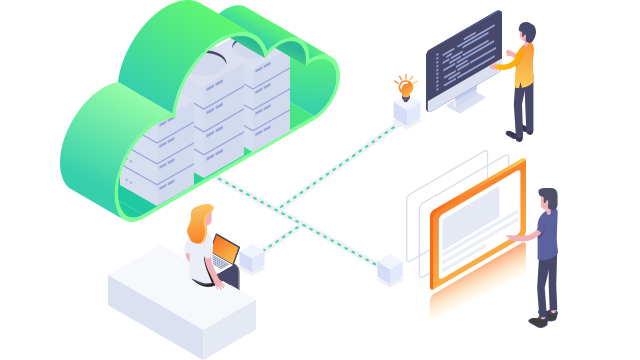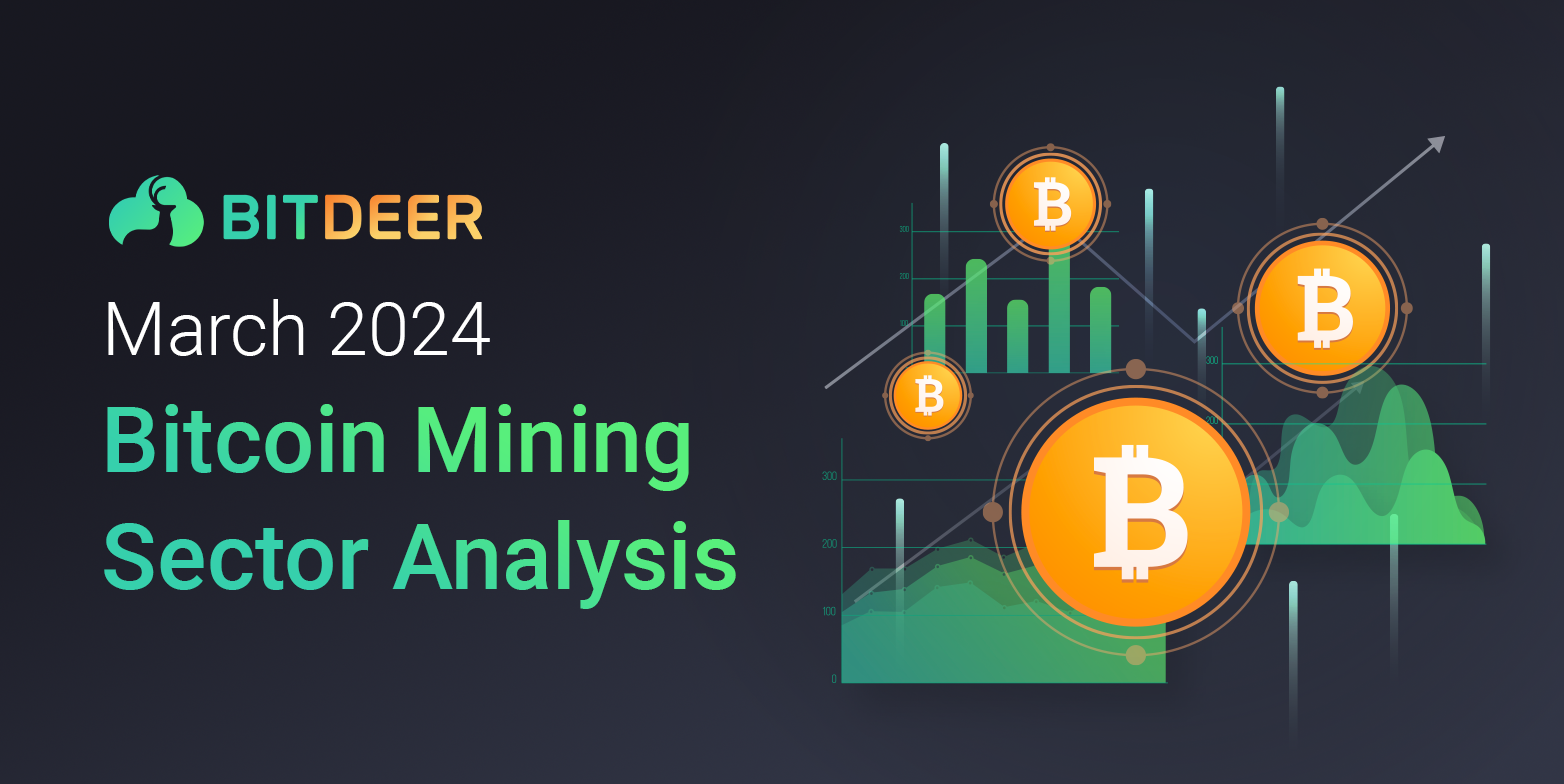AI Cloud Instance
Our cloud service makes it easy to deploy container-based GPU instances in seconds, from either public or private repositories. This means that you can get started with GPU computing quickly and easily, without having to worry about managing your own hardware.


비트코인 채굴 및 암호화폐 블로그 . 2023.11.14
Nvidia GPU Data Centers - What is Happening?
As Nvidia may be set to aggressively expand into the cloud, here’s what might happen and how it might affect the prices of GPUs, crypto, and future data centers.

Nvidia has consistently made headlines with its innovative products and strategic business decisions. As Nvidia may be set to aggressively expand into the cloud, here’s what might happen and how it might affect the prices of GPUs, crypto, and future data centers.
What is Nvidia Doing?
Nvidia, traditionally known for its powerful graphics processing units (GPUs) that revolutionized gaming and computer graphics, is now venturing into the realm of GPU data centers. This transition sees Nvidia not just as a hardware manufacturer but as a comprehensive solutions provider, leveraging its GPU technology to cater to the growing demands for data processing, artificial intelligence (AI), and machine learning applications.
This strategic move involves the deployment of GPUs in large-scale data centers, harnessing the parallel processing capabilities of GPUs to manage and analyze vast amounts of data at unprecedented speeds. Nvidia is advancing the capabilities of data centers through its newest innovations, the H100 and H200 GPUs, which are built on the Hopper architecture.
The H100 GPU has been celebrated for delivering performance gains that surpass Moore’s law and introducing breakthrough AI capabilities, accelerating the time to discovery for scientists and researchers. The latest H200, however, marks a considerable leap forward, being the first GPU to offer 141 gigabytes of HBM3e memory with a bandwidth of 4.8 terabytes per second, almost double the capacity of the H100 and with 1.4 times more memory bandwidth.
The influence of these technologies on data centers is significant. The H200, specifically, has a substantial shared memory capacity of 144TB distributed among NVIDIA Grace Hopper Superchips. This enables developers to have about 500 times more memory for constructing large-scale AI models, resulting in very efficient computational performance. By enabling data centers to manage increasingly complicated jobs, scale AI applications, and process big datasets more effectively, this enormous boost in processing and memory capacity solidifies Nvidia's leadership in AI and computing innovation. (Data: NVIDIA)
Why does this matter to Nvidia?
Nvidia's venture into GPU data centers, especially with advancements like the H100 and H200 GPUs, matters significantly. By enhancing their GPU offerings for data centers, Nvidia is not just selling hardware; they are positioning themselves as key players in the cloud computing space. This aligns them with the industry's shift towards cloud-based solutions and services.
As is commonly understood, cloud computing represents a lucrative, rapidly growing market. Nvidia's expansion into this domain opens up new revenue streams beyond their traditional GPU sales for gaming and consumer use. As cloud services grow more complex and demand more power, Nvidia's GPUs could become the de facto standard for cloud providers, giving them a competitive edge over rivals in both hardware and cloud sectors.
Aggressive expansion into the cloud can foster strategic partnerships with cloud service providers, further embedding Nvidia into essential cloud infrastructure. Bitdeer stands as the first partner in Nvidia's cloud service network in Asia. In essence, Nvidia's potential aggressive expansion into the cloud with their advanced GPU offerings is a strategic move to capture a substantial share of the cloud computing market, ensure continued growth, and maintain technological leadership.
What does this mean for GPUs?
The implications of Nvidia's strategy on the GPU market are substantial. With the company focusing on data centers, we could anticipate changes in GPU production and availability. This move could lead to increased demand for data center-specific GPUs, potentially influencing the supply of consumer-level graphics cards.
However, Nvidia’s deep understanding of the market dynamics suggests that while they are scaling up their data center solutions, they are unlikely to neglect the gaming and consumer graphics segment, which has been their stronghold for decades. The company's strategy is expected to be one of balance, ensuring that while they cater to the booming data center market, they also maintain the supply and advancement of GPUs for personal and professional use.
What does this mean for Datacenter Locations?
Nvidia's aggressive expansion into GPU data centers could significantly impact data center locations globally. As they push the envelope in GPU capabilities, the data center industry might see a shift toward regions with certain strategic advantages. This includes areas with cooler climates to manage the heat generated by GPUs more efficiently, locations with access to cheaper and cleaner energy sources to power energy-intensive operations, and regions with favorable regulatory environments for data operations and privacy.
Additionally, there might be a trend towards urban data center development to reduce latency for AI-driven services requiring real-time processing, pushing the envelope on the traditional data center geography. Nvidia’s expansion could also influence local economies, job markets, and technological advancements, making data center locations hotspots for innovation.
What does this mean for cryptocurrency?
The cryptocurrency world, highly reliant on GPUs for mining operations, could feel the ripple effects of Nvidia's investment in data centers. If Nvidia allocates a significant portion of its GPU production to data centers, the supply for consumer and cryptocurrency mining markets could tighten, potentially leading to increased prices for available GPUs.
Moreover, should Nvidia develop GPUs specifically optimized for data center operations, it could reduce the efficiency of using consumer-grade GPUs for mining, thus influencing the cryptocurrency mining landscape. If mining becomes less profitable due to a hike in GPU costs or a shortage in supply, some miners might exit the market, which could, in theory, affect the network difficulty and the overall market dynamics of cryptocurrencies.
Learn more about Crypto and AI at Bitdeer
Bitdeer emerges as a multifaceted platform poised to educate and provide services in this evolving digital landscape. It’s not just about cloud mining; Bitdeer stands at the confluence of cryptocurrency and AI, offering a comprehensive suite of services that cater to enthusiasts and professionals alike. Keep an eye out, as we're gearing up to bring you a continuous stream of amazing AI-centric stories and insights!
DISCLAIMER
*Information provided in this article is for general information and reference only and does not constitute nor is intended to be construed as any advertisement, professional advice, offer, solicitation, or recommendation to deal in any product. No guarantee, representation, warranty or undertaking, express or implied, is made as to the fairness, accuracy, timeliness, completeness or correctness of any information, or the future returns, performance or outcome of any product. Bitdeer expressly excludes any and all liability (to the extent permitted by applicable law) in respect of the information provided in this article, and in no event shall Bitdeer be liable to any person for any losses incurred or damages suffered as a result of any reliance on any information in this article.








